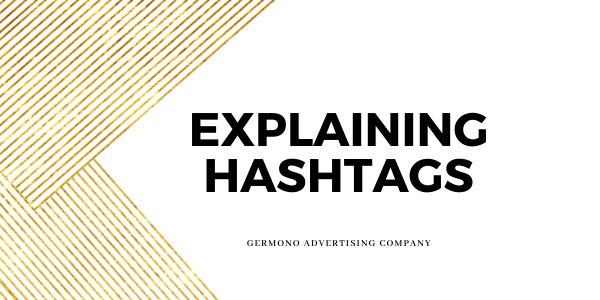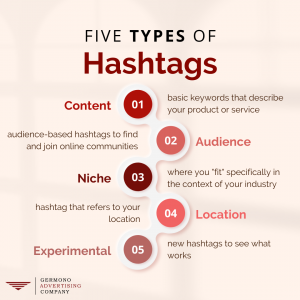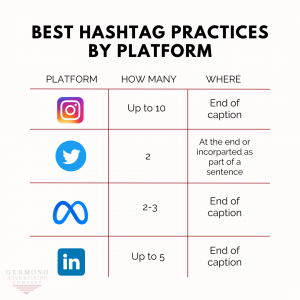
25 Feb Explaining Hashtags
By Justice Abbott
Hashtags… what are they? What do they mean? How do we use them? We see them everyone but ever wondered if you’re actually using them correctly? We’re here to help!
What are hashtags?
The technical term for a hashtag is actually an octothorpe! Hashtags are a word or phrase preceded by the pound symbol, indicating that a piece of content relates to a specific topic or belongs to a category. I’m sure you’ve seen them all over the place.
Why should you use hashtags?
Hashtags help you reach your target audience and make it easier for social media users to find your content because they make content discoverable in on-platform searches. When users are looking for specific items, services, or topics, they have the ability to search a hashtag within each platform. This is why it’s important for you, as a business owner, to incorporate hashtags into your posts so that people looking for you can find you!
Types of hashtags
Now that you know what hashtags are and why it’s a good idea to use them, let’s take a look at the different types of hashtags you can use. When drafting out your verbiage, keep these 5 categories in mind when deciding which hashtags to use:
- Content: basic keywords that describe your product or service.
- Audience: there are different communities that exist on social media, use audience-based hashtags to find and join them.
- Niche: show where you “fit” specifically in the context of your industry.
- Location: even if you geotag your post, it’s a good idea to include a hashtag that refers to your location.
- Experimental: have fun and try out new hashtags to see what works!
How to use hashtags
We’ve explained what hashtags are and the different types, now how do you actually use them? To create a hashtag, all you need to do is include a ‘#’ and a relevant keyword or phrase. A hashtag must be written as a single word, without any spaces. You can include numbers in a hashtag, but punctuation and special characters won’t work.
Here are 3 things to remember when using hashtags:
- Keep it short: don’t squish too many words into one hashtag. Nobody likes overly wordy hashtags.
- Don’t overuse them: only put a hashtag next to a word that is really significant. Avoid writing your caption with one hashtag per word.
- Think strategically: mix hashtags that have high volume with hashtags that are more specific so you have a chance to stand out.
How to use hashtags by platform
 Hashtags have become a resource used across all platforms, but they shouldn’t be used in the same way for each. Always remember to search a hashtag before using it to make sure it’s relevant and that people are engaging with it.
Hashtags have become a resource used across all platforms, but they shouldn’t be used in the same way for each. Always remember to search a hashtag before using it to make sure it’s relevant and that people are engaging with it.
For Twitter, you’ll want to limit 2 hashtags per post because anything over that has been proven to decrease engagement. Hashtags placement on Twitter is quite flexible compared to other platforms. They can be placed at the end or incorporated into a sentence.
On Instagram, it’s important to limit yourself to no more than 10 hashtags per post and place them at the end of your caption.
Believe it or not, hashtags on Facebook and LinkedIn are actually less important than on the other platforms. We recommend limiting your use of them, but of course, using “brand specific” hashtags won’t hurt you.
Our number one hashtag tip is to search it before you use it! This will let you see how people are engaging with it, make sure it’s not filled with spam posts, or see how many people are following the tag. Always have fun and try out new hashtags every once in a while because a tag that was once popular may die down or become banned by the platform.
See screenshot of what we mean on Instagram when searching #ValentinesDay

To stay up to date with our marketing tips and tricks, subscribe to our monthly newsletter at the footer of our website. As always, don’t hesitate to shoot us an email at info@germono.com if you have any questions or just want a pair eyes to look at your social media!
